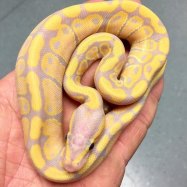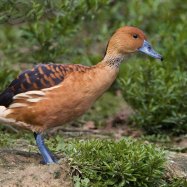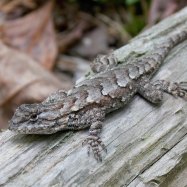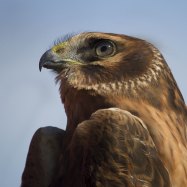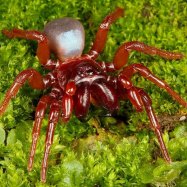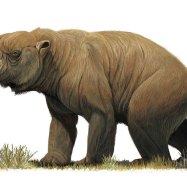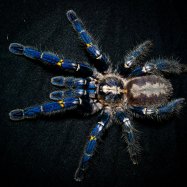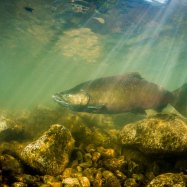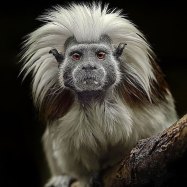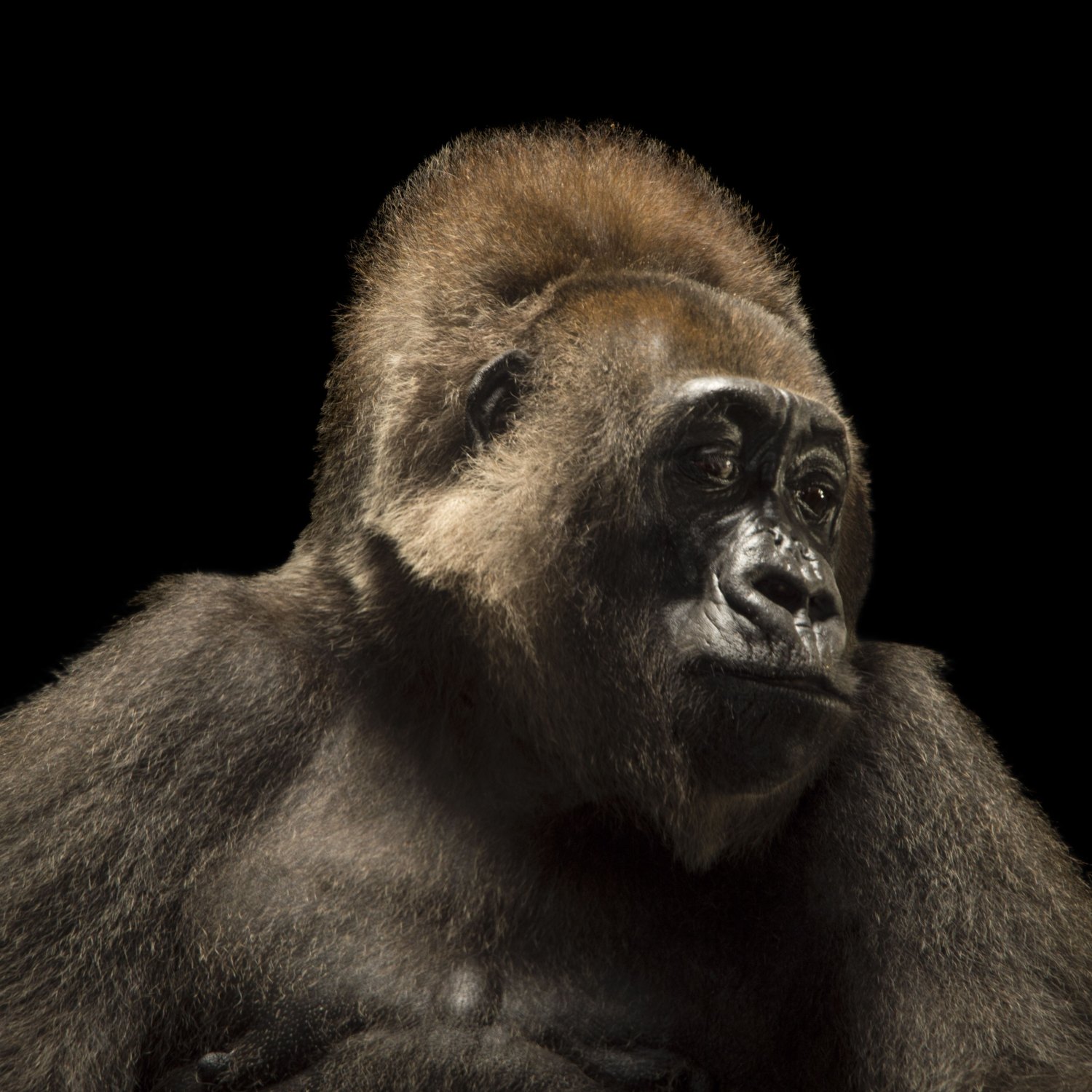
Cross River Gorilla
1.5-1.7 meters
Cross River Gorilla, known for its large and muscular body, can be found in the rainforests and montane forests of Africa. With a length of 1.5-1.7 meters, these majestic animals belong to the Hominidae family. They are a critically endangered species, making efforts towards their conservation crucial. Let's work towards protecting these magnificent creatures and their habitats. #CrossRiverGorilla #EndangeredSpecies #WildlifeConservation
Animal Details Summary:
Common Name: Cross River Gorilla
Kingdom: Animalia
Habitat: Tropical forests
The Majesty of the Cross River Gorilla: A Primate Worth Protecting
In the dense forests of Cameroon and Nigeria, hidden away from the prying eyes of humans, lives one of the most majestic creatures on earth - the Cross River gorilla.Scientifically known as Gorilla gorilla diehli, the Cross River gorilla is a subspecies of the western gorilla and is endemic to the Cross River region of Nigeria and Cameroon. With a limited population of only 300 individuals, this gorilla is one of the most endangered primates in the world.
But what makes the Cross River gorilla stand out among its fellow primates? From its habitat to its physical features, there are many unique aspects of this animal that make it worth protecting and preserving Cross River Gorilla. So, let's dive into the world of the Cross River gorilla and uncover its captivating story.
The Cross River Gorilla: A Rare and Elusive Creature
The Cross River gorilla, also known as the Nigerian-Cameroon chimpanzee, is a subspecies of the western gorilla and is closely related to the more well-known and studied western lowland gorilla.Often referred to as the "world's most endangered great ape," the Cross River gorilla inhabits the tropical forests of the Cross River region of Nigeria and Cameroon. Due to their elusive and shy nature, this gorilla has rarely been studied in its natural habitat, and much of its behavior and ecology remains a mystery.
According to estimates, there are only about 300 individuals left in the world, making them critically endangered. This alarming number is a direct result of habitat loss and poaching. The Cross River gorilla's limited population is spread across fragmented forests, making them extremely vulnerable to extinction.
The Habitat of the Cross River Gorilla: A Secretive Sanctuary
Tropical forests are known for their lush green canopies, diverse flora and fauna, and thriving ecosystems. It's no surprise that this is where the Cross River gorilla makes its home Chigger. These gorillas are found in both rainforests and montane forests, where they live in small, fragmented groups of 5-7 individuals.The Cross River region of Nigeria and Cameroon is characterized by its rugged and mountainous terrain, making it an ideal home for these elusive creatures. These gorillas are most commonly found in dense forests near rivers, where they can access water and food easily.
However, the Cross River gorilla's habitat is under continuous threat due to human activities, such as agriculture, logging, and human settlements. As their habitat shrinks, these gorillas are forced to live in smaller and more fragmented areas, making it difficult for them to find enough food and resources to survive.
A Herbivore in the Jungle: The Feeding Habits of the Cross River Gorilla
As with all gorillas, the Cross River gorilla is primarily herbivorous, meaning it primarily eats plants. Their diet consists mostly of fruits, leaves, stems, and shoots from a variety of plants found in their habitat.These gorillas have a slow metabolism, which means they need to eat a lot of food to survive. On average, they consume about 18 kilograms of food per day. As they live in dense, tropical forests, these gorillas tend to have a varied diet, depending on the season and availability of different plants.
A recent study found that the Cross River gorillas' diet mainly consists of figs, the fruits of African breadfruit trees, and creeping herbs. They are also known to supplement their diet with small insects and invertebrates, making them opportunistic feeders.
The Beauty of the Black: The Physical Features of the Cross River Gorilla
The Cross River gorilla is a large and muscular animal, with a black coat of dense fur, giving them a majestic appearance. Generally, males are about 13% larger than females, with an average height of 1.7 meters and a weight of 200 kilograms. Females, on the other hand, are slightly smaller, measuring around 1.5 meters and weighing about 140 kilograms.One of the most striking physical features of the Cross River gorilla is its prominent brow ridge and sagittal crest, which is more pronounced in males. These physical traits are characteristics of a fully developed adult gorilla and play a role in their social hierarchies, with bigger, more dominant males having a better chance of attracting females for mating.
The Cross River Gorilla: A Primate with a Purpose
The Cross River gorilla is not just a beautiful animal; it also plays a vital role in its ecosystem. As herbivores, these gorillas help maintain the balance of plant populations in their habitat. When they eat fruits and plants, they disperse seeds through their droppings, allowing new plants to grow and aiding in reforestation.Furthermore, the Cross River gorilla is a flagship species, meaning that its conservation efforts can benefit many other species in its habitat. By protecting their habitat, we can also safeguard the survival of many other plant and animal species that rely on the same forests for their survival.
Cross River Gorilla: A Cultural and Economic Symbol
In addition to its ecological importance, the Cross River gorilla also holds cultural and economic significance for the people living in the Cross River region of Nigeria and Cameroon. These gorillas are revered by the local communities, who see them as guardians of the forest and an important part of their culture and heritage.The Cross River gorilla also plays a role in eco-tourism, which has the potential to generate revenue for local communities and contribute to the conservation efforts of this endangered species. Through responsible and sustainable tourism, the local communities can benefit from the gorillas' presence, thus reducing their reliance on activities like poaching and logging, which contribute to their decline.
The Need for Conservation
Despite their ecological, cultural, and economic significance, the Cross River gorilla continues to face several threats. Habitat loss, fragmentation, and poaching remain some of the biggest challenges to their survival.The forests where these gorillas live are also home to many other endangered species, such as chimpanzees, elephants, and pangolins, making their protection even more crucial. The good news is that there are ongoing efforts to conserve this majestic primate, such as World Wildlife Fund's Cross River Landscape Conservation Project, which aims to protect the forests and secure a future for the Cross River gorilla and its fellow species.
The Cross River Gorilla: A Primate Worth Protecting
In conclusion, the Cross River gorilla is a rare and majestic being, worthy of our attention and protection. With its limited population and threats to its habitat, there is an urgent need to raise awareness and take action to conserve this endangered species.By learning more about the Cross River gorilla and its role in its habitat, we can better understand the importance of preserving our planet's biodiversity. It is our responsibility to ensure that this remarkable primate, and all the other species that share its home, can thrive for generations to come. Let us all do our part in protecting the Cross River gorilla and its magnificent home, the tropical forests of Cameroon and Nigeria.

Cross River Gorilla
Animal Details Cross River Gorilla - Scientific Name: Gorilla gorilla diehli
- Category: Animals C
- Scientific Name: Gorilla gorilla diehli
- Common Name: Cross River Gorilla
- Kingdom: Animalia
- Phylum: Chordata
- Class: Mammalia
- Order: Primates
- Family: Hominidae
- Habitat: Tropical forests
- Feeding Method: Herbivorous
- Geographical Distribution: Cross River region of Nigeria and Cameroon
- Country of Origin: Nigeria, Cameroon
- Location: Rainforests and montane forests
- Animal Coloration: Black
- Body Shape: Large and muscular
- Length: 1.5-1.7 meters
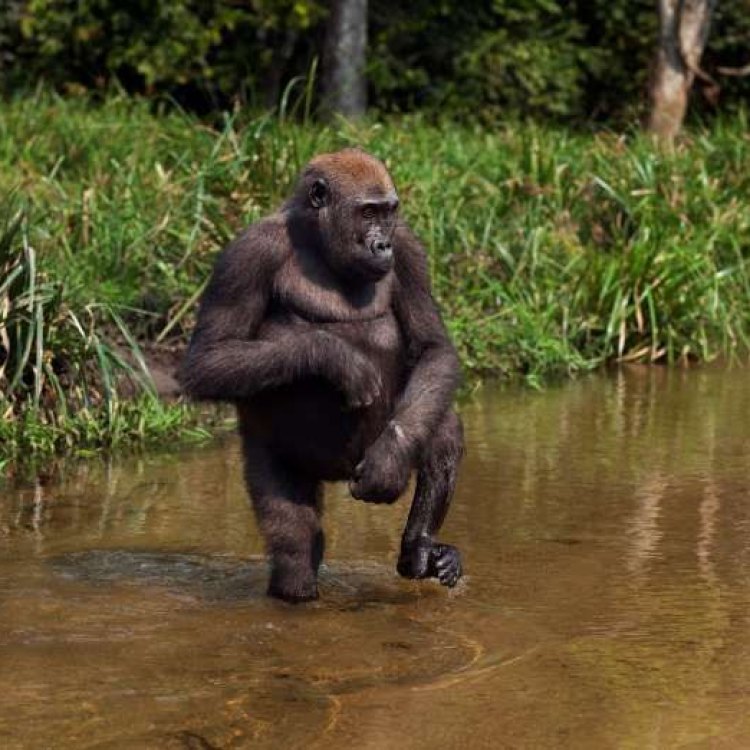
Cross River Gorilla
- Adult Size: 120-200 kilograms
- Average Lifespan: 35-40 years
- Reproduction: Viviparous
- Reproductive Behavior: Polygynous
- Sound or Call: Deep chest-beat and grunts
- Migration Pattern: Semi-nomadic
- Social Groups: Groups of 2-20 individuals
- Behavior: Diurnal and arboreal
- Threats: Hunting and habitat loss
- Conservation Status: Critically Endangered
- Impact on Ecosystem: Seed dispersal
- Human Use: Bushmeat and traditional medicine
- Distinctive Features: Prominent sagittal crest and large body size
- Interesting Facts: The most endangered gorilla subspecies
- Predator: None
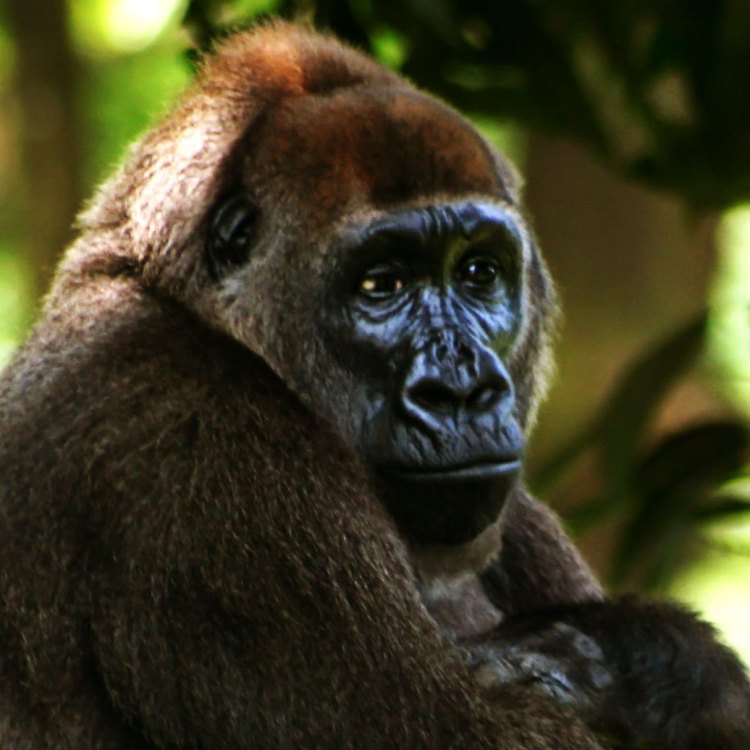
Gorilla gorilla diehli
The Cross River Gorilla: The Most Endangered Gorilla Subspecies on Earth
Deep in the mountains of western Africa, a majestic creature roams, its presence barely known to the outside world. The Cross River Gorilla, with its distinctive features and unique behaviors, is a subspecies of the gorilla family that is critically endangered. It is estimated that there are only about 250-300 individuals remaining, making it the most endangered gorilla subspecies on earth.The Cross River Gorilla, also known as Gorilla gorilla diehli, is a sub-species of the Western gorilla PeaceOfAnimals.Com. It is found in the Cross River region of Nigeria and Cameroon, which is why it gets its name. This region is known for its rugged terrain and dense forests, making it difficult for researchers and conservationists to study and protect this elusive species.
But why is this particular gorilla subspecies so vulnerable? Let's dive into the unique features and behaviors of the Cross River Gorilla to understand its conservation status and the role it plays in its ecosystem.
The Physical Characteristics of the Cross River Gorilla
The Cross River Gorilla is one of the largest gorilla subspecies, with adults weighing between 120 to 200 kilograms, and standing at an impressive height of 1.7 to 1.8 meters. They have a black fur coat that protects them from the harsh weather conditions in their natural habitat.One unique feature of the Cross River Gorilla is its prominent sagittal crest, a ridge of bone that runs along the top of its skull. This serves as an attachment point for the powerful jaw muscles, helping them chew their plant-based diet Corella. The males also have prominent silver-grey hair on their back as they mature, giving them a distinct silverback appearance.
The Reproductive Behavior of the Cross River Gorilla
The Cross River Gorilla is a viviparous species, which means they give birth to live young rather than laying eggs. They are also polygynous, with one male mating with multiple females. This behavior is observed in most gorilla subspecies and helps maintain genetic diversity within the population.The mating season for the Cross River Gorilla is not well understood, but it is believed to happen throughout the year. The females give birth to one baby every four to five years, and the baby gorillas are entirely dependent on their mothers for the first three years of their life.
The Social Life and Behavior of the Cross River Gorilla
The Cross River Gorilla is a highly social species, living in groups of 2-20 individuals. These groups mainly consist of females and their offspring, along with one dominant male, who is responsible for protecting the group. Young male gorillas usually leave their group by the age of 11 to form their own group or join an existing one.This species is diurnal, which means they are active during the day, and their day is divided between foraging, resting, and social interactions. They are also known to be arboreal, spending most of their time in trees, although they do come down to the ground to search for food. The Cross River Gorilla prefers to build their nests in trees for the night, providing them with safety from potential predators.
The Threats Facing the Cross River Gorilla: Hunting and Habitat Loss
Unfortunately, the Cross River Gorilla faces numerous threats in its natural habitat. The primary cause of its decline is hunting, as they are hunted for their meat, locally known as bushmeat. The gorilla's meat is considered a high-status food and is often served at special occasions or ceremonies.Habitat loss is another significant threat to the Cross River Gorilla. The dense forests where they live are being cleared for agriculture, logging, and development projects, shrinking their already limited living space. With a continuously growing human population, the gorillas are losing their homes and food sources, forcing them into smaller, more fragmented areas.
The Conservation Status of the Cross River Gorilla
The International Union for Conservation of Nature (IUCN) lists the Cross River Gorilla as critically endangered, the highest threat level given to a species. This status highlights the urgency of the conservation efforts needed to save this species from extinction. The population of the Cross River Gorilla has declined by over 60% in the last 20 years, and without significant conservation efforts, they may disappear from the earth entirely.The governments of Nigeria and Cameroon, along with several conservation organizations, are working to protect this species and its habitat. However, their efforts are hindered by the challenging terrain and remote location of the gorilla's habitat. It is crucial to engage and involve the local communities in these conservation efforts to ensure their success.
The Impact of the Cross River Gorilla on its Ecosystem
The Cross River Gorilla not only plays a vital role in its ecosystem but also has a significant impact on its surroundings. As herbivores, they play a crucial part in seed dispersal, ensuring the regeneration of forests. Their foraging behavior also creates pathways that allow other animals to travel through dense forests, promoting biodiversity.Furthermore, the presence of Cross River Gorillas can contribute to eco-tourism, providing economic benefits to local communities and creating an incentive for conservation. Protecting this species and their habitat has a ripple effect on the entire ecosystem, benefiting plants, animals, and humans alike.
The Human Use and Exploitation of the Cross River Gorilla
Sadly, the Cross River Gorilla is also exploited by humans for their body parts. Their skulls, hands, and feet are used in traditional medicine, which is believed to have healing properties. This use of body parts not only threatens the survival of the species but also goes against cultural and religious beliefs that view gorillas as sacred creatures.As mentioned earlier, the Cross River Gorilla is also hunted for their meat, as it is considered a delicacy and a symbol of status. This highlights the need for education and awareness programs to help change societal attitudes towards the consumption of gorilla meat and use of body parts.
Interesting Facts About the Cross River Gorilla
- The Cross River Gorilla is the most endangered gorilla subspecies on earth, with only 250-300 individuals remaining.- They are the largest subspecies of gorillas, weighing up to 200 kilograms.
- The sagittal crest on their skull is more prominent in males, serving as an attachment point for their powerful jaw muscles.
- Their silverback appearance is only seen in mature males.
- They are highly social and live in groups of 2-20 individuals.
- The Cross River Gorilla is diurnal and spends most of its time in trees.
- They face threats from hunting for bushmeat and habitat loss.
- The Cross River Gorilla is critically endangered, requiring urgent conservation efforts.
- They play a vital role in their ecosystem through seed dispersal and promoting biodiversity.
- They are also exploited by humans for traditional medicine and as a food source, going against cultural and religious beliefs.
In Conclusion
The Cross River Gorilla, with its distinctive features and unique behaviors, is a subspecies that is critically endangered. Its population has declined drastically in the last few decades due to human activities such as hunting and habitat loss. But with conservation efforts and involvement from local communities, we can still save this magnificent species from extinction.It is essential to spread awareness and promote education about the role of the Cross River Gorilla in its ecosystem and the impact of its loss on the environment. By valuing and protecting this species, we can ensure a healthier and more diverse ecosystem for future generations to come. Let's work together to protect the Cross River Gorilla and preserve its rightful place in the web of life on our planet.
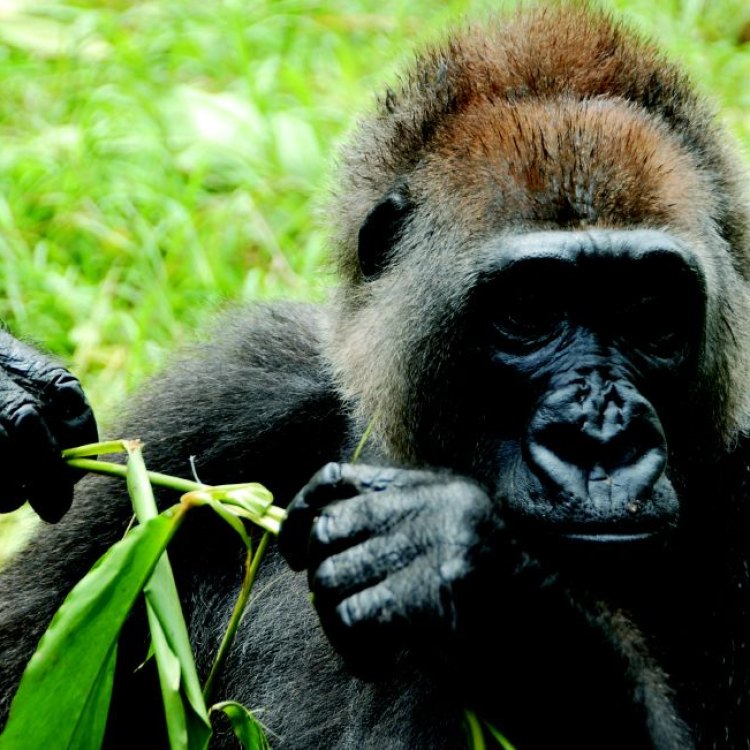
The Majesty of the Cross River Gorilla: A Primate Worth Protecting
Disclaimer: The content provided is for informational purposes only. We cannot guarantee the accuracy of the information on this page 100%. All information provided here may change without prior notice.

